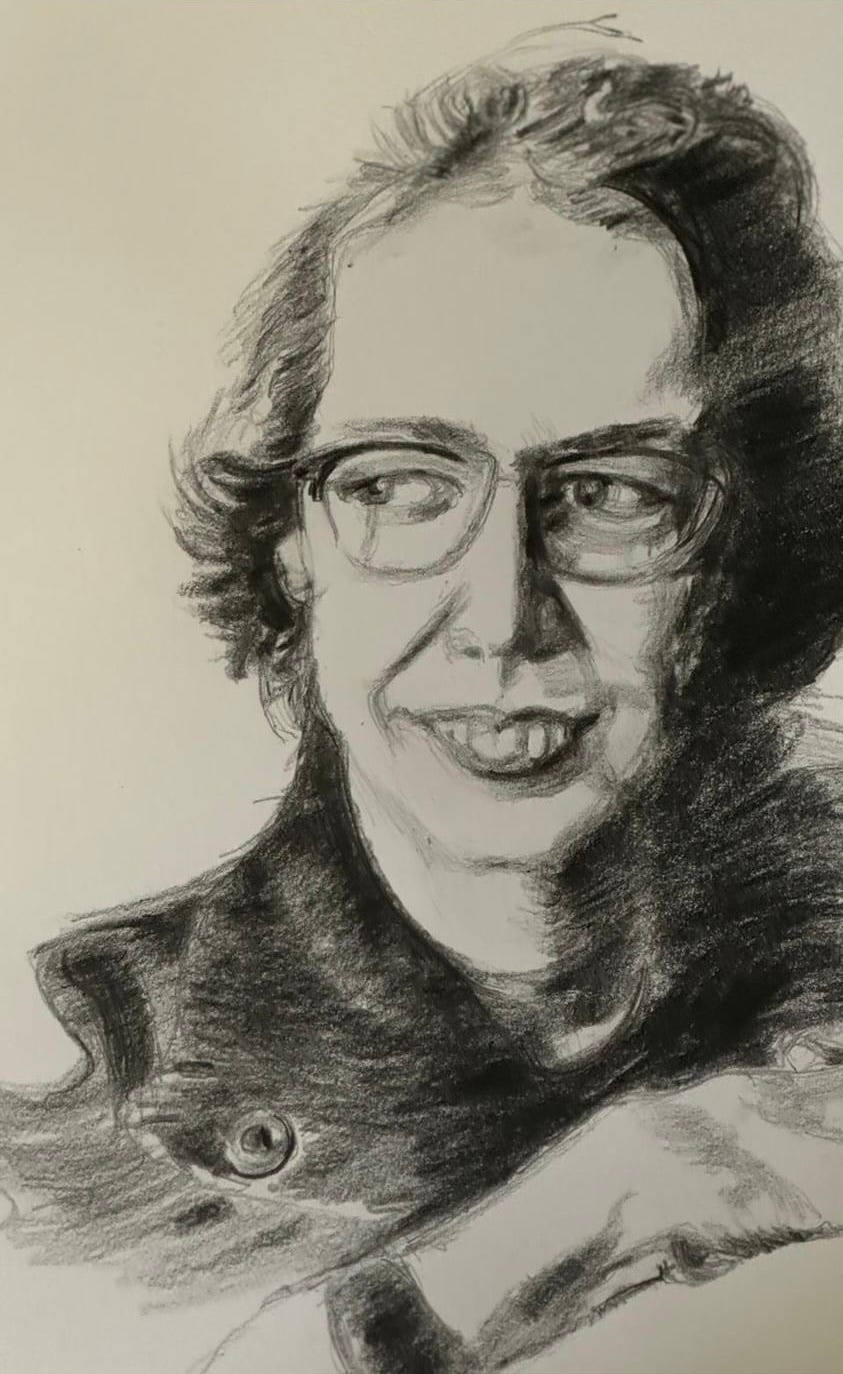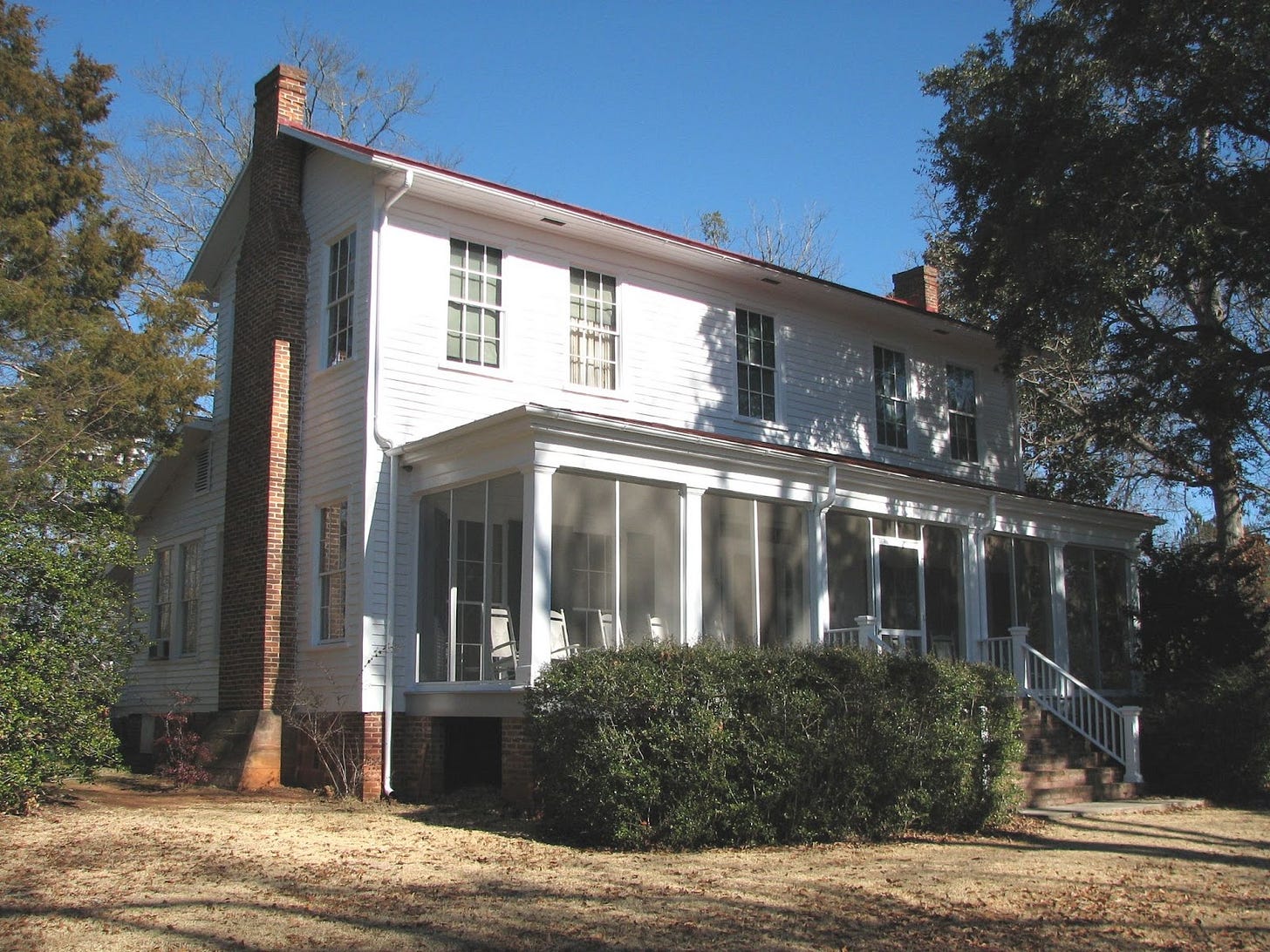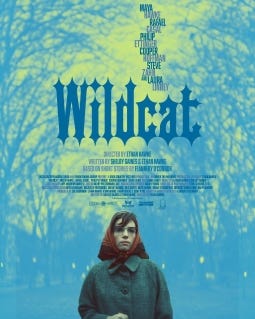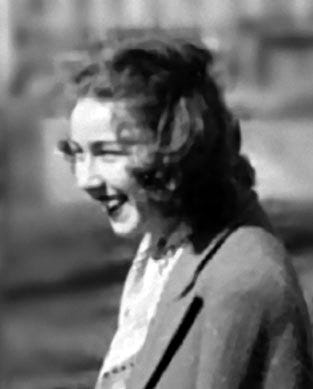New Flannery O'Connor biopic leaves me with an "enduring chill"
A good man is hard to find, and apparently so is a good movie
In the opening of Wildcat, a Flannery O’Connor quote flashes on screen: “I’m always irritated by people who imply that writing fiction is an escape from reality. It’s actually a plunge into reality.” It’s interesting to see how far a movie with such an epigraph can depart from the truth, contorting the fascinating reality of O’Connor’s life and work into a cringing, and cringey, deception.
But really, what did I expect? Not only is the movie a biopic, which nearly always makes for a bad movie, but it’s also an American film made in 2023: I didn’t have to see the trailer to know there would be a prevailing earnestness, one of the defining emotions of the 2020s (the antidote perhaps to its other one — outrage), and a neutered blandness — an interesting period to revisit O’Connor’s work, known for its unsentimentality and provocative boldness.
Yet, the movie promised to be different from the conventional biopic. Writer-director Ethan Hawke weaves in some of O’Connor’s short stories, casting O’Connor (played by his daughter Maya Hawke) and her mother, Regina (Laura Linney), in them.
Wildcat centers on O’Connor’s life between 1950 and 1952, the period in which she finished her first novel, Wise Blood, and was diagnosed with lupus, an autoimmune disease that would ultimately take her life at 39 years old, after having previously claimed her father’s when O’Connor was 15. During this time, she moved back home to Georgia to live with her mother.
The movie depicts O’Connor during these years as frail not only in body but in spirit. In a decisive scene, she pulls her father’s crutches out of the closet and balances herself on them, signifying her transformation into an exalted victim. Hawke proceeds to linger excessively on O’Connor’s pain and suffering, showing her stumbling around on her crutches and sniveling, while emotional music urges us to feel something.
In the midst of all her tears and tumbling, a priest comes to visit, and O’Connor wonders, suddenly, whether or not she is right with God for her work. It is a rare moment of clarity into this fictional Flannery’s mind, and the movie wants us to believe this is the emotional heart of the story.
“But my writing is scandalous! Can it still serve God?” Flannery O’Connor actually asks about her own work.
“Is your writing honest? Is your conscience clear?” the priest, played by Liam Neeson, comforts her.
The crisis is sudden and unearned, but with his soothing, Irish lilt and dashing vestments, Neeson assures O’Connor, who was by now IRL a committed writer, that she has divine permission to be her irreverent little self, while he beguiles the audience into thinking the movie is achieving its cathartic release.
The scene, however reassuring to audiences, is entirely out of keeping with O’Connor’s ethos: As Alison Maclod writes, “O’Connor had little patience in fiction for ‘hazy compassion,’ unearned moments of redemption, and comfortingly ‘moral’ conclusions, or for a reader’s expectation of any of the above. Instead, she was a writer who held her nerve as each story took a life of its own on the page. …”
The movie’s account of O’Connor during these years is also at odds with the historical record we have of the author through her letters. As Sally Fitzgerald, her friend and editor of O’Connor’s collected letters, writes, “If she had a long struggle accepting loneliness, and the reality of a permanently curtailed life, or if she felt resentment or self-pity (and how could she have failed to suffer these, and much more, to some degree?), she gave no sign of such feeling to any of us. There is no whining.”
So what’s with all the whining then?
The film seems to draw from O’Connor’s Prayer Journal written in 1946–1947 while she was at the Iowa Writers’ Workshop. But while her journal focuses on her shaky relationship with her faith at the time, there’s little indication she struggled with the moral rightness of her work. In fact, she feels convinced at one point that God is speaking through her art: “Don’t let me ever think, dear God, that I was anything but the instrument for Your story — just like the typewriter was mine.”

It seems bewildering that anyone enamored with O’Connor would choose to portray her in such a vulnerable state. For one, she’s known for the unyielding dedication to her faith and her work, however much it appears she struggled with both in her Prayer Journal. She knew her days were numbered and she worked like it — amassing an astounding oeuvre before she finally died at the age of 39. But it’s only as O’Connor is drying her eyes and ready to get down to business that the movie ends.
O’Connor’s longtime friend and pen pal Robert Lowell wrote after her death:
It seems such a short time ago that I met her at Yaddo, 23 or 24, always in a blue jean suit, working on the last chapters of Wise Blood, suffering from undiagnosed pains, a face formless at times, then very strong and young and right. She had already really mastered and found her themes and style, knew she wouldn’t marry, would be Southern, shocking and disciplined. In a blunt, disdainful yet somehow very unpretentious and modest way, I think she knew how good she was. I suppose she knew dimly about the future, the pain, the brevity, the peacocks, the life with her mother. She was 38 [actually, 39] when she died, and I think always had the character of a commanding, grim, witty child, who knew she was destined to live painfully and in earnest, a hero, rather like a nun or Catholic saint with tough innocence, well able to take on her brief, hardworking, hard, steady, splendid and inconspicuous life. I think the cards seemed heavily stacked against her, and her fates must have felt that they had so thoroughly hemmed her in that they could forget, and all would have happened as planned, but really she did what she had decided on and was less passive and dependent than anyone I can think of.”
(Like the other parts of her bio in Wildcat, O’Connor’s relationship with Robert Lowell, is similarly distorted and sentimentalized. The music and their awkward interactions hint at unrequited love, but whose love exactly and how strong remains as murky as O’Connor’s supposed crisis of faith, especially as Lowell married Elizabeth Hardwick in 1949. Leave it to Hollywood to try to turn a movie about Flannery O’Connor, of all people, into a love story.)
“I wanted to make a movie that I wanted to see,” Ethan Hawke said in an interview. Alas, his role in First Reformed wasn’t enough to get it out of his system. “I am a very spiritually minded person. It’s the most important thing in my life. And I don’t see much about it (in film).”
There’s a reason for that, of course. As Hawke admits, “The spiritual life is hard to dramatize.”
While the difficulty of conveying spiritual themes ultimately leads to Wildcat’s failure, it’s also what makes the works of Flannery O’Connor all the more wondrous, especially in “Revelation” and “The Enduring Chill.” Why not just produce an, ahem, faithful reproduction of these stories instead?
With such a weak script, you’d think the short story adaptations would be a welcome break. However, they are even more disappointing than the biographical storyline.
The stories adapted for Wildcat showcase the author’s distinctive, bold style, formidable in its assuredness: “Good Country People,” “The Life You Save May Be Your Own,” “The Enduring Chill,” “Everything That Rises Must Converge,” “Revelation,” and “Parker’s Back.”
That is, on the page they do. In the movie, they appear sentimental and neutered, robbed of their essence — hardly worthy of the word “scandalous.”
By choosing to cast the actors who play O’Connor and her mother in the short stories, Hawke, who is also a novelist, may at first glance display a nuanced understanding of the tendency for writers to pull material from real life. But he makes a fatal error — the distance between O’Connor and her characters is one of the most distinctive features of her work, allowing her to portray their flaws and quirks in all their glorious, darkly funny irony.
The biggest violation of this narrative distance: Those who are unfamiliar with O’Connor’s work would never know that the very biopic itself is actually a dramatization of what I consider to be her greatest short story, “The Enduring Chill,” about a college graduate who comes home apparently gravely ill from New York with the intention to die at his family home in Georgia — and to make his mother guilty for it.
(O’Connor’s stories are filled with these intellectually enlightened elitists who return from their education and are just as pious and hypocritical as their Christian, racist counterparts in the South. Twenty-five-year old Asbury Porter Fox, the protagonist of “The Enduring Chill,” is my favorite of these characters.)
Not included in the movie is the hilarious detail of The Letter, which gives some insight into Asbury’s character:
While he was still in New York, [Asbury] had written a letter to his mother which filled two notebooks. He did not mean it to be read until after his death. …
He knew, of course, his mother would not understand the letter at once. Her literal mind would require some time to discover the significance of it, but he thought she would be able to see that he forgave her for all she had done to him. …
If reading it would be painful to her, writing it had sometimes been unbreakable to him — for in order to face her, he had had to face himself. “I came here [New York City] to escape the slave’s atmosphere of home,” he had written, “to find freedom, to liberate my imagination, to take it like a hawk from its cage and set it “whirling off into the widening gyre” (Yeats) and what did I find? It was incapable of flight. It was some bird you had domesticated, sitting huffy in its pen, refusing to come out!” The next words were underscored twice. ‘I have no imagination. I have no talent. I can’t create. I have nothing but the desire for these things. Why didn’t you kill that too? Woman, why did you pinion me?”
A number of key scenes, dialogue, the name of O’Connor’s doctor, and even O’Connor’s character are drawn from the story, and like Asbury, O’Connor is made out to be disdainful of her mother, self-absorbed, and pretentious.
In fact, the scene between O’Connor and the priest is actually filched from this story, where it’s much funnier, or um, actually funny. Romanticizing the Jesuits to be his equal in intellect, the unbeliever Asbury arranges for a local priest to pay him a visit:
“It’s so nice to have you come,” Asbury said. “This place is incredibly dreary. There’s no one here an intelligent person can talk to. I wonder what you think of Joyce, Father?”
The priest lifted his chair and pushed closer. “You’ll have to shout,” he said. “Blind in one eye and deaf in one ear.”
“What do you think of Joyce?” Asbury said louder.
“Joyce? Joyce who?” asked the priest.
“James Joyce,” Asbury said and laughed.
The priest brushed his huge hand in the air as if he were bothered by gnats. “I haven’t met him,” he said. “Now. Do you say your morning and night prayers?”
Here Asbury is the butt of the joke. But in Wildcat, the very author of the joke becomes its target when O’Connor asks Father Neeson what he thinks of James Joyce (womp-womp).
O’Connor was described by those who knew her well as kind and generous, and she was known for her joie de vivre. She also shared a close relationship with mother; her only great fear was that she would die before Regina — “I don’t know what I would do without her,” she once told Fitzgerald. To equate O’Connor with this pretentious ingrate who hates his mother isn’t just an inaccurate portrait, it’s also a curious example of plagiarism, appropriating the fruits of O’Connor’s imagination without credit — and using her own talents to distort and defame her persona.
In the end, rather than a biopic, Hawke has made a fictional story — literally, it’s an adaptation of a short story more than anything else. But saddest of all, it fails to do justice to the original text, as O’Connor’s sharp wit and irony can never fully shine, and if they glimmer every now and then for a second, no one would recognize it as her own unless they knew her work.
O’Connor’s critique of racism is similarly lost in translation. While the question of whether or not Flannery O’Connor is a racist may be at the top of some people’s minds in 2020s America, her work clearly and poignantly depicts the South of her era in an unflattering light. Regrettably, and ironically in deference to the sensitivities of modern audiences, the movie largely sidesteps the author’s satirical commentary on these themes.
I was surprised to hear the N-word at all in “Revelation,” a story set in a doctor’s waiting room in the rural South whose characters delightfully toss around their various prejudices, racial and otherwise. But while the slur is included a smattering of times, it’s left out just as much (notably, Mrs. Turpin’s fantasy version of Jesus Christ says “Black folks” instead), and the ending of the word is even curiously altered at times to a softer, less aggressive “GRUH.”

I suppose it’s nothing new for Hollywood to portray their subject inaccurately, but Hawke takes it a step further by misrepresenting O’Connor the artist. Whether you’re a believer or not, there’s no denying the presence of something divine in her writing. Despite his attempt to aim for the spiritual, the otherworldly talent and grace in her stories are obscured, and the author’s uncanny conviction in their truth and rightness starkly contrast with Hawke’s wishy-washy Ficty Flan.
I expect that anyone new to O’Connor who watches Wildcat will know it’s a bad biopic, but what keeps me up at night is that they’d never suspect they were watching the work of the greatest American short story writer of the twentieth century. If you haven’t had a chance yet to enjoy O’Connor, do yourself a favor: skip the movie and pick up her Collected Stories instead.




